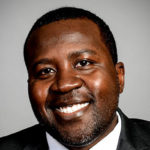- Inventor Group Wants To Halt All New PTAB Reviews – U.S. Inventor has filed an injunction request seeking to bar the PTAB from instituting any new patent reviews. However, unlike several tech companies who want to diminish the authority of the USPTO director to deny institution, U.S. Inventor hopes to enhance it.
- Biogen’s Patent Loss Spotlights Need to Stress Invention Novelty – The Federal Circuit’s recent decision emphasizes the need for patent applicants, particularly when seeking to patent biological drug products, to distinguish their inventions from those previously introduced to the public.
- Federal Circuit: Patent Directed to Physician to Patient Communication System Abstract, Invalid – The Federal Circuit issued an opinion earlier this month, which addressed both Section 101 patent eligibility and recusal under 28 U.S.C. § 455(a).
Here’s the latest.
Inventor Group Wants To Halt All New PTAB Reviews
Reported by Tiffany Hu on Law360
The inventor organization, U.S. Inventor, has requested a temporary restraining order and a preliminary injunction barring the Patent Trial and Appeal Board from conducting any new trials and patent reviews until there is clarity on when the board has the discretion to deny review. Previously, multiple companies, including Apple and Google, have come forward challenging PTAB precedent allowing judges to skip instituting inter partes reviews based on pending district court litigation. While these tech companies argue that skipping IPR undermines the America Invents Act and was illegally implemented, U.S. Inventor’s injunction request seems to urge the USPTO director to undergo formal rulemaking in order to enhance the PTAB’s practice of discretionary denial. Tiffany Hu highlights the frustration tech companies have with the NHK-Fintiv rule, which represents a policy of denying institution based on a series of factors. Tech companies argue that the application of these factors leads to “speculative, unpredictable, and unfair outcomes.” Citing that it has “conflicting goals” with the tech companies, U.S. Inventor sees formal rulemaking as a way to solidify and strengthen the authority of the director to deny institution.
‘This is an emergency,’ U.S. Inventor said. ‘Patentees need (but lack) tools to avoid institution, and Congress required the director to provide them through notice-and-comment rulemaking.'”
Biogen’s Patent Loss Spotlights Need to Stress Invention Novelty
Reported by Perry Cooper on Bloomberg
In Biogen MA Inc. v. EMD Serono, Inc., Serono argued that Biogen’s patent, which described a method of using a recombinant DNA product to treat Multiple Sclerosis, was anticipated by two references teaching the use of native DNA to treat viral diseases. On Monday, the Federal Circuit issued a favorable ruling for Serono and reinstated a jury verdict that found that Biogen’s patent claims were invalid as anticipated by prior art. Perry Cooper highlights what this case means for patent applications moving forward.
The decision extended the product-by-process rule—that an old method of administering an old product made by a new process isn’t novel—to a method of treatment claim.”
According to Jeff Vockrodt, partner at Culhane Meadows Haughian & Walsh PLLC in New York, this decision is particularly important for biological drug products, “where the novelty of the product often resides in the way it is made.” The Federal Circuit expressed that when the product itself is identical to the prior art non-recombinant product, the fact that the product came from recombinant DNA is not sufficient, by itself, to confer novelty. Agreeing with Serono, the court explained that the product itself must be novel. Furthermore, the court rejected Biogen’s argument that its protein produced by recombinant DNA has a different folding structure than the natural protein.
‘This suggest that patent applicants will need to work harder to describe exactly how their products distinguish the prior art at the time they file their applications,’ Vockrodt said. ‘Litigants will need to preserve these arguments by providing detailed jury instructions on these exact points of novelty.’”
For more on this case, see our coverage.
Federal Circuit: Patent Directed to Physician to Patient Communication System Abstract, Invalid
Reported by Anthony J. Fuga on Holland & Knight Section 101 Blog
Angadibir Singh Salwan filed a patent application which disclosed a secure infrastructure to facilitate real-time electronic communication and transfer of patient health information between physicians and patients. However, the patent examiner rejected Salwan’s pending claims as patent-ineligible subject matter under Section 101. After the PTAB affirmed the examiner’s rejection, Salwan filed a district court action against the USPTO. Salwan was unsuccessful in the district court and responded by seeking recusal. When the district court denied his motion for recusal, he appealed both issues to the Federal Circuit. As to the first issue, the Federal Circuit held that the “claims merely recite well-known processes related to organizing patient health, insurance, and billing information, and add the requirement of implementing them on a computer,” and were thus insufficient to transform the abstract idea into a patent-eligible invention. On the issue of recusal, the court disagreed with Salwan’s argument that false statements warrant recusal.
‘A judge’s opinion based on the record does not constitute a basis for a recusal motion.’ The court noted that while Salwan may disagree with the district court’s characterization of the record, that does not mean they’re ‘false statements.’ The Federal Circuit’s agreement with the district court’s rulings ‘firmly underscores this conclusion,’ and the Federal Circuit affirmed the district court’s decision.”

